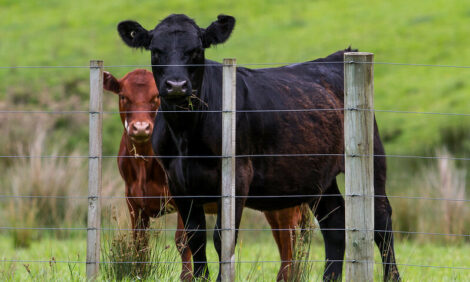



How to safely graze frosted sorghums
The first light frosts are only weeks away in the US Midwest. However, planning for these events should be considered by producers grazing plants in the sorghum family.In addition to sorghum, plants such as sudangrass, and milo or grain sorghum fall under this same level of risk as colder temperatures draw near. Following a freeze, these forages can be highly toxic with prussic acid. Drought, pasture clipping, and overgrazing are other events that can cause increased levels of prussic acid.
During a freeze, the plant’s cell membranes are broken open by ice crystals. This frees a naturally occurring cyanide compound found in sorghums from its chemical bond. We know this released toxin as prussic acid. While this toxin is always present to some extent, wilting and frost injury of a plant damages the bonds keeping prussic acid from being immediately released upon consumption. When this damage occurs, prussic acid is quickly released upon consumption and the chances of toxicity in a plant that would regularly be nontoxic are increased. This process is repeated every time a new part of the plant freezes.
We also need to be wary of new growth and prussic acid risk. New shoots naturally contain larger amounts of prussic acid than older tissues. This is true for the first shoots after germination as well as any regrowth that occurs following damage like grazing, hail, drought, or a freeze. Concentrations are high enough in fresh growth that even with undamaged tissues, prussic acid toxicity may occur. If paired with an event that makes the prussic acid more available like a freeze, we need to be extremely cautious.
Prussic acid toxicity occurs rapidly after consumption. Upon being absorbed into the blood stream, the prussic acid prevents hemoglobin in the blood from carrying oxygen, depriving the peripheral tissues. Clinical signs of this toxicity include increased breathing rate, increased pulse, gasping, trembling, blue coloration of the mouth, and convulsions. These indicators are rarely seen because most animals die in a matter of minutes. Morbidity is caused by the hinderance of the body’s capability to breath and disperse oxygen to tissues.
Risk of prussic acid poisoning can be mitigated with proper management. Below are health and forage management tips that can allow farmers to utilize sorghum related plants as high-quality annual forages.
- Utilize species that would pose less of a cyanide risk. Hybrids such as sorghum-sudangrass are less likely to produce as high of volumes of prussic acid as grain sorghum. Lowest in risk of the sorghum family are sudangrass. You may also consider using a non-sorghum species such as a millet or small grain for late season grazing in the future.
- Hold off on grazing plants until they reach a safe height; at least 18-20 inches for forage sorghum and 15-18 inches for sudangrass. This avoids the cyanide risk caused by high concentrations in new growth.
- Turn cattle out when they have had access to a limit fed concentrate or hay. This reduces the risk of potentially high intakes of toxic forages, and carbohydrates from cereal grains hinder prussic acid formation.
- Do not graze during or immediately after stressful events that damage plants. This includes drought, hail, or frost. It would be advised to delay grazing for 5-7 days after each frost or until the entire plant is killed following a plant damaging event to allow prussic acid levels to decline before grazing.
- Avoid grazing young regrowth. Measuring shoot growth is one way to identify young regrowth. If new growth is noticed, pull the cattle off and graze accordingly.
- Prussic acid dissipates once the plants die, so hay is generally safe from prussic acid concerns. Similarly, the fermentation process of ensiling makes most silage safe as well.
Photo credit Troy Walz.



